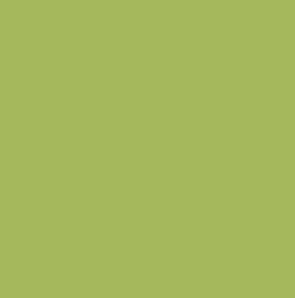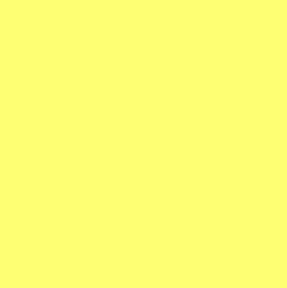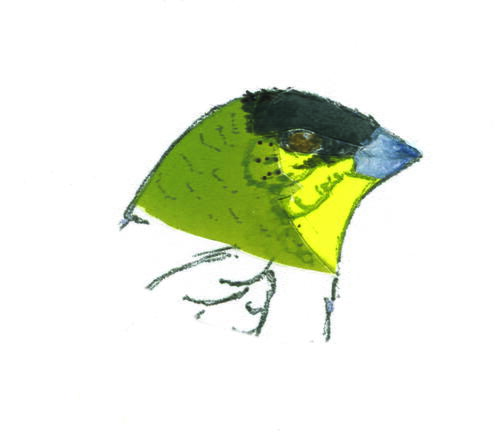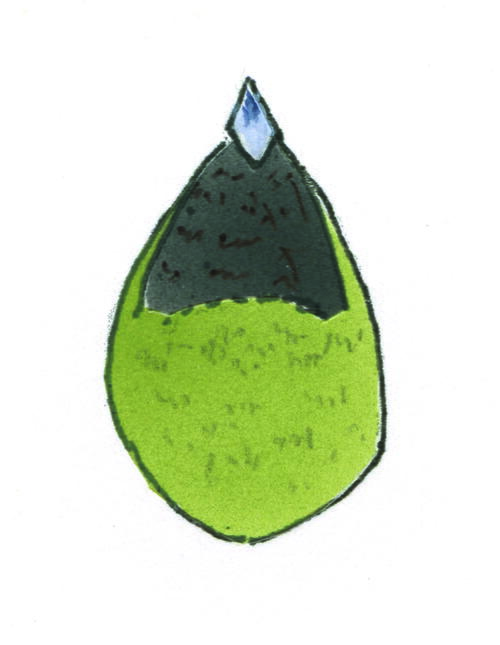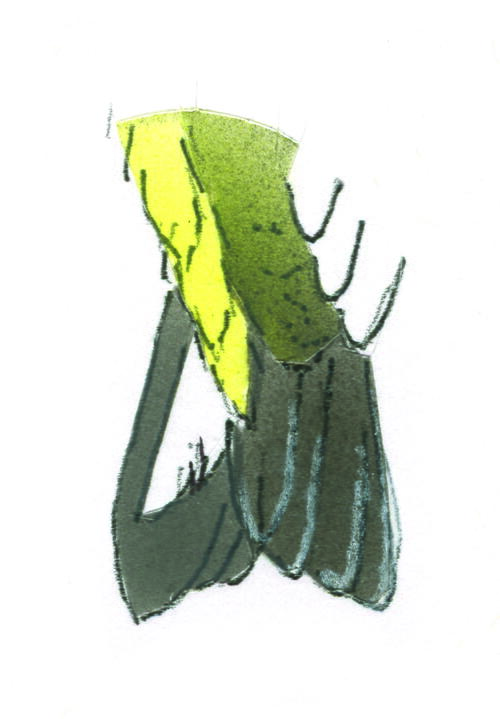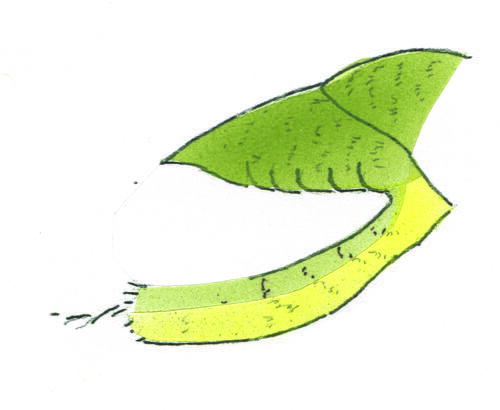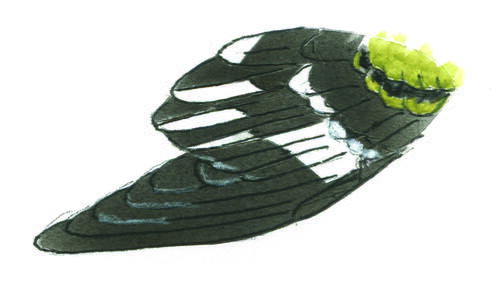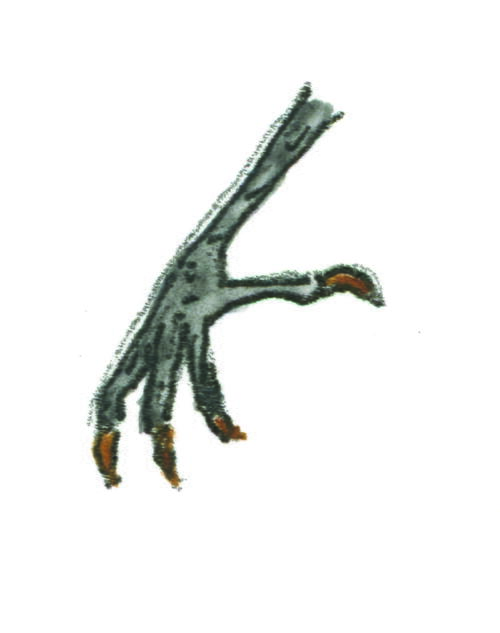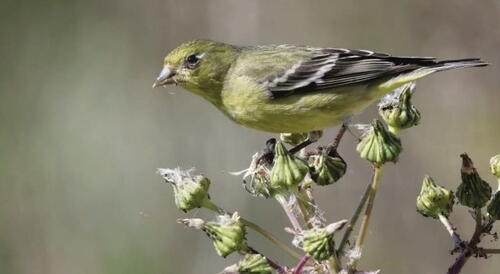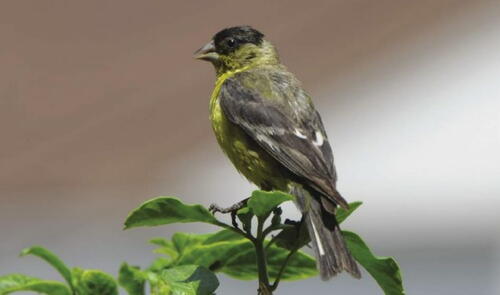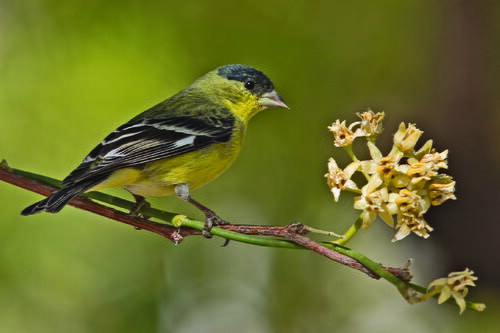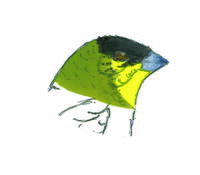Lesser Goldfinch
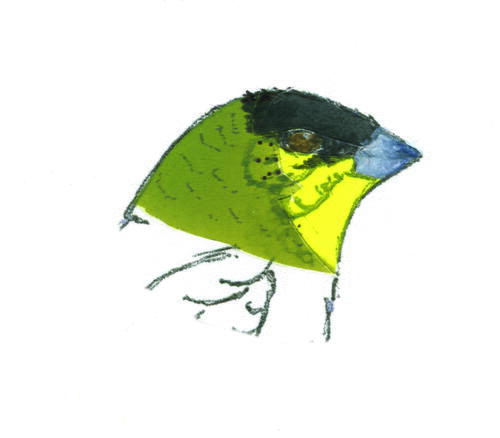
The lesser goldfinch (Carduelis psaltria) is described as smaller than the American goldfinch, measuring between 3½ to 4½ inches in length, with a conical bill; short, notched tail; long, pointed wings; and a black cap. The lesser goldfinch varies in color geographically. In the southern states, the back, rump, and upper-tail coverts are black, while in the southwestern states, the hind neck, back, rump, and upper-tail coverts are greenish.
The measurements for the pattern and information for the notes were taken from study skins provided by the School of Life Sciences at Arizona State University, in Tempe. Thanks to Dr. Dakota Rowsey, manager (480-727-5870).
Jerry Poindexter is a carving judge from Washington state. You can reach him at icarve@cet.com.
Materials List
-
Paints
Liquitex
- Raw umber
Jo Sonja
- Cadmium yellow light
- Cadmium red light
- Ultramarine blue
- Burnt umber
- Payne’s gray
-
Brushes
- #1
- #2
MEASUREMENTS (in mm)
Eyes: 3 brown
Wing chord: 62 (from the wrist to the longest primary feather)
Head width in front of the eyes: 9
Head width at the ear coverts: 16
Bill:
Tip of the bill to the front of the eyes: 11
Exposed culmen: 8
Gape: 9; nares: 6; malar: 7
Tarsus: length: 10; width: .05; height: 0.75
Toes:
Hallux: 6 (plus 5 for the nail)
Middle: 7 (plus 5 for the nail)
Inner: 5 (plus 4 for the nail)
Outer: 6 (plus 4 for the nail)
Tail length (visible): 25
PAINT SWATCHES
-
Equal parts cadmium yellow light and cadmium red light, with a touch of cerulean blue
-
1 part ultramarine blue, 2 parts burnt umber
-
Cadmium yellow light
-
1 part ultramarine blue, 2 parts burnt umber, with touch of titanium white
-
Payne’s gray lightened with titanium white
Lesser Goldfinch
-
HEAD, NAPE, AND CROWN
For the back of the crown and nape, apply equal parts cadmium yellow light and cadmium red light. This should make orange. Add a little cerulean blue to make a dull green. Make a large amount of this mixture for later use. The crown is 1 part ultramarine blue with 2 parts raw umber. -
BILL
Apply titanium white with Payne’s gray. Darken the tip of the bill with Payne’s gray. -
UPPER-TAIL FEATHERS
Apply washes of 1 part ultramarine blue with 2 parts burnt umber. The center and outer-tail feathers have a titanium white edge. -
MANTLE, SCAPULARS, RUMP, AND UPPER-TAIL COVERTS
Apply in light washes the dull green mixture with equal parts cadmium yellow light and cadmium red light, with a small amount of cerulean blue. -
WINGS (PRIMARIES, SECONDARIES, TERTIALS, GREATER AND PRIMARY COVERTS, AND ALULAS)
Apply 1 part ultramarine blue with 2 parts raw umber. The tertials have a large leading-edge of titanium white. The lower secondaries and upper primary feathers form a titanium white patch. The greater coverts have titanium white ends. For the median coverts, apply the dull green to the ends, as the base of the feathers are black; the lesser coverts are dull green. -
UNDER-TAIL FEATHERS
Apply 1 part ultramarine blue with 2 parts burnt umber with a touch of titanium white to lighten. The under-tail feathers have titanium white applied to the inner webs. -
UNDERSIDE
On the chin, throat, breast, belly, and under-tail coverts, apply a thin wash of dull green under the wings. -
FEET
The tarsus and toes are 1 part ultramarine blue with 2 parts burnt umber. The nails are burnt umber.
Carduelis psaltria
-
©SUSAN T. COOK
-
©ANDY REAGO AND CHRISSY McCLARREN
-
©OVERLANDFLYER
-
©ALAN D. WILSON
Read NextYellow-breasted Chat


